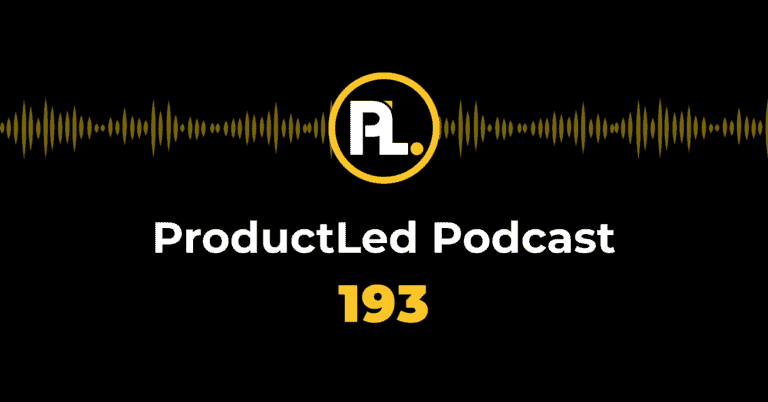Let’s face it: going from $0 to $1 million in annual recurring revenue (ARR) is hard enough. So, seeing a company go from $1 million to $200 million should pique your interest.
At Amplitude, that’s exactly what we did. With a product-led approach, we’ve grown our ARR 200x, all while satisfying thousands of customers.
In this blog post, I break down the finer details of our journey to succeed as a product-led company:
- Why Amplitude Chose to Become a Product-led Organization
- Turning Our Internal Structural Upside Down
- Analyzing Success With Product-Led Organizations
Why Amplitude Chose to Become a Product-led Organization
While no two companies take the same approach to product-led growth, the foundation is generally the same. It all starts with understanding the basics.
Let’s start with a definition:
Product-led growth is a business strategy that relies on using your product as the main vehicle to acquire, activate, and retain customers.
For example, if you’ve used Slack for corporate communication, you didn’t read an in-depth website or whitepaper to learn more. You signed up, experienced the product in action, and then decided what to do next.
So, why did we choose the product-led path?
In 2016, we realized we were at a key pivot moment in how we drive growth. The dilemma was whether we should continue with a traditional sales approach or seek new ways to unlock additional growth areas.
But it’s not as simple as going all-in on product-led. There are plenty of moving parts.
For example, it was around this time that we realized we needed a killer free product to have more success, so we turned off the credit card requirement for trying Amplitude. We did this in tandem with creating a much more aggressive free product.
Turning Our Internal Structural Upside Down
Another big change was our internal structure. Everything needed to change from the ground up. So we decided on pods, pillars, and squads approach. Of course, you don’t have to use the same terminology. For instance, some companies break into “squads” and “tribes.”
Before we examine our approach, let’s define these three terms:
- Pods: Small teams that oversee products or projects.
- Pillars: Categories that house pods.
- Squads: Groups of people who focus on clearly defined goals.
Our Use of Pods, Pillars, and Squads
Pods, pillars, and squads can be important to building and maintaining a successful product-led organization.
Starting with the company structure in its early days, Amplitude had a product manager and engineering lead overseeing every product. At its highest number, there were 12 pods within the company, managed by an executive team.
As Amplitude grew, the pod structure ended up causing more harm than good. This led the company to minimize its number of pods and shift more toward a “pillars” structure.
Think of pillars as categories that house different pods. Here’s how Bauer explains it:
Pillars are a little bit more of self-sustained things that we knew we were going to be investing in over time. We call them pillars because they really only change if the strategy changes, whereas pods can change because of the tactics. We'll try different tactics on, as we're learning all the time, and strategy shouldn't be widely changing, but some change is natural over time. In the end, pillar leads end up having pods underneath them.
Now for squads. These are groups of people who focus on a specific goal. They know what they have to accomplish and set the goal of getting there within a predetermined period. Everything is clear-cut. For example, a squad could be a group of five people working together to get 2,000+ sign-ups within 30 days.
The key to success with pods, pillars, and squads is structure. When Amplitude was a tiny company, a multiple pod system was the perfect setup. But as they began to grow, pods began to disappear, and those that remained were placed within pillars.
Analyzing Success With Product-Led Organizations
The most successful product-led organizations have a defined system for analyzing success and making changes accordingly. Without this, you’ll never know what’s working, what isn’t, and how to adjust accordingly.
Let’s look at the most popular ones in place.
OKRs: Are They Worth It?
Many companies use the “Objectives and Key Results” — or OKR — goal-setting framework.
Amplitude takes a slightly different approach to OKRs. Rather than focusing on “objectives” and “key results,” its primary concern is objectives.
There are a couple of things that I don’t like about OKRs and the way they impact some teams. For example, I’ve had people tell me how many OKRs they manage. And those same people tell me they’re going to get fired if they miss them.
As a philosophy, some companies operate in that fashion. I’m not a believer in that: you accomplish your goals as a team. While there’s obviously a need for accountability a lot of times, it doesn’t mean the entire team did a poor job.
Along with the above, OKRs are also “quarterly operated.” Amplitude doesn’t take this approach. Instead, it uses a rolling concept focusing on one three-month roadmap at a time. With a rolling approach, the idea of cramming everything into a single quarter doesn’t exist. There’s more flexibility built into the roadmap.
Create a Vision Strategy Roadmap
Of course, you can’t employ a rolling concept without a vision strategy roadmap. You still need this to provide direction.
At Amplitude, every pillar and pod — all the way up to the top of the company — has some version of a vision strategy roadmap. This allows every team member to answer three questions clearly:
- What’s their strategy for the next three months?
- Where do they fit into that strategy?
- What’s the north star metric within each area?
Within each pillar and pod, every employee knows the goals for their specific product as well as within the company as a whole.
At the pod level, there are leading indicators. These are the things they’re trying to move with.
We call these bets, which are the same as the features we ship. They have this name because we want to see if it ends up creating the desired outcome. If an idea works, it’s great. Double down.
And if it doesn’t, forget it and move on.
Remember, there’s no one size fits all solution to a vision strategy roadmap, but every product-led organization needs some variation of this.
Transform Your SaaS Company Today
Like many companies, Amplitude had its sights set on product-led growth but was unsure of how to proceed. After deciding why you want to take your company down this path, examine its internal structure, analyze what success means to you, and create a vision strategy roadmap.
It’s not an overnight transition, so don’t expect to see major changes within days. Instead, continue to put one foot in front of the other — following the above advice — and you’ll soon realize that your dream of a product-led company is becoming a reality.
If you need a push in the right direction, take ProductLed’s product-led growth certification course, or read the Product-Led Growth book.









